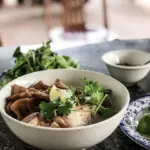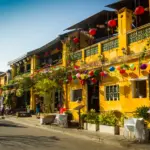Best Places to Eat Authentic Cao Lau in Hoi An with Ovuigo
When seeking the best place to eat cao lau in Hoi An, look for venues dedicated to authenticity and local flavor. Here are three must-visit spots:
- Morning Glory Original is a beloved choice, known for its traditional cao lau recipes and exceptional service. The vibrant ambiance blends elegance with local Hoi An culture, making it ideal for first-timers. Price: 100,000–300,000 VND. See on Google Maps
- Quan Cao Lau Ba Le garners loyal local and tourist followings due to its peerless texture and flavors. Their noodles are springy, the pork is packed with savor, and the fresh herbs shine. Price: 10,000–100,000 VND. See on Google Maps
- Quan Cao Lau Thanh is a true local favorite, often praised for its Old Quarter vibe and robust, well-balanced taste. Price: 10,000–100,000 VND. See on Google Maps
Each of these top cao lau restaurants serves the hallmark chewy noodles, smoky pork, and aromatic greens that define this Hoi An specialty food. Insiders suggest sampling more than one spot early in your trip to appreciate subtle differences in preparation—none disappoint for local authenticity.
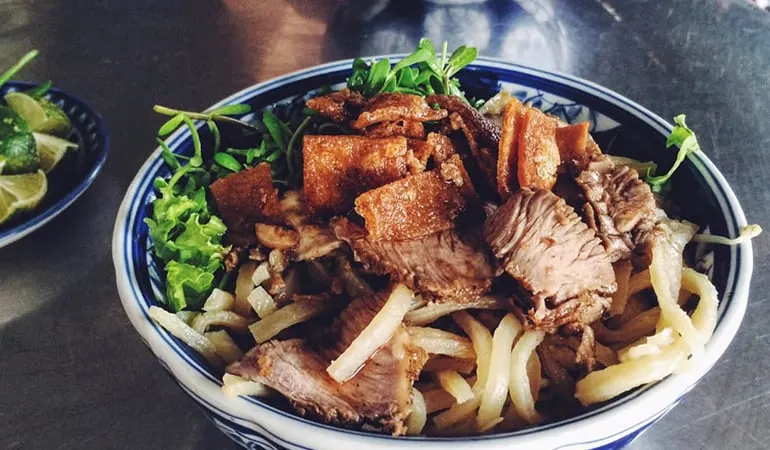
What Makes Cao Lau a Hoi An Specialty Food with Ovuigo
Cao lau is more than just another noodle dish. It embodies Hoi An’s ancient heritage, standing as a culinary artifact distinct to this former spice port. The legend goes that its unique origins are tied to Japanese, Chinese, and indigenous Vietnamese influences, forged when Hoi An was a bustling trading port.
What truly defines authentic cao lau is exclusivity. The noodles are made with lye water drawn from Ba Le Well, an ancient water source that imparts a springy, chewy bite not found in any other noodle dish. (You can visit Ba Le Well itself in the heart of town: See on Google Maps) Bamboo ash is also secretly incorporated, further distinguishing the taste and color.
Eating cao lau is experiencing a living thread of Hoi An’s past; every bowl mirrors the blend of cultures that shaped the city, from its architecture to its cuisine. No other region can claim the same combination of special water, ancient trade, and local know-how—making this noodle unique to Hoi An.
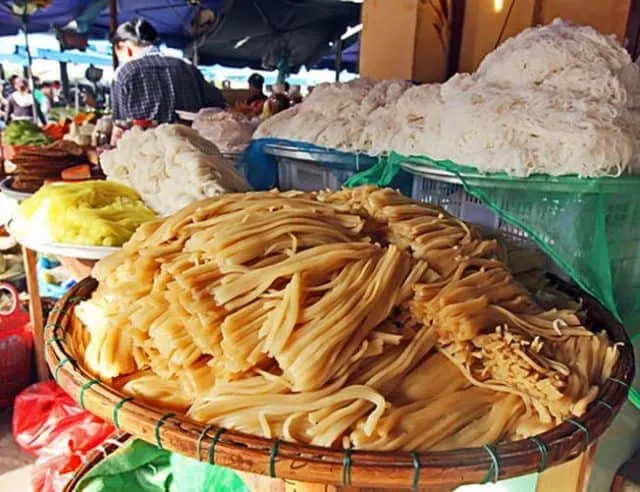
Traditional Cao Lau Ingredients and Preparation
A proper bowl of cao lau balances a handful of precise, local ingredients:
- Noodles: Thick, yellow-hued noodles, springy and slightly firm to bite, thanks to the lye water from Ba Le Well and bamboo ash mixed into the rice flour.
- Pork: Marinated in five-spice and soy, slow-roasted, then sliced thin for smokiness and tenderness.
- Greens and Herbs: A mountain of local baby lettuce, mint, bean sprouts, and aromatics like coriander, grown in Hoi An’s fertile Tra Que village.
- Broth: Rather than a full soup, cao lau is served with just a ladleful of concentrated, slightly sweet pork-based broth to moisten the noodles.
- Crispy Crackers or Pork Skin: Adds crunch and adds contrast to the noodles’ chew.
Preparation is laborious. Rice is soaked, ground, and kneaded with lye water before being steamed and sliced into noodles—a technique only passed down in select Hoi An families. The pork is marinated overnight, then grilled or braised for hours. Each component is layered, never just mixed, resulting in a bowl with depth, bite, and freshness. If you seek the most traditional cao lau experience, ask about the noodles’ water and the source of the greens.
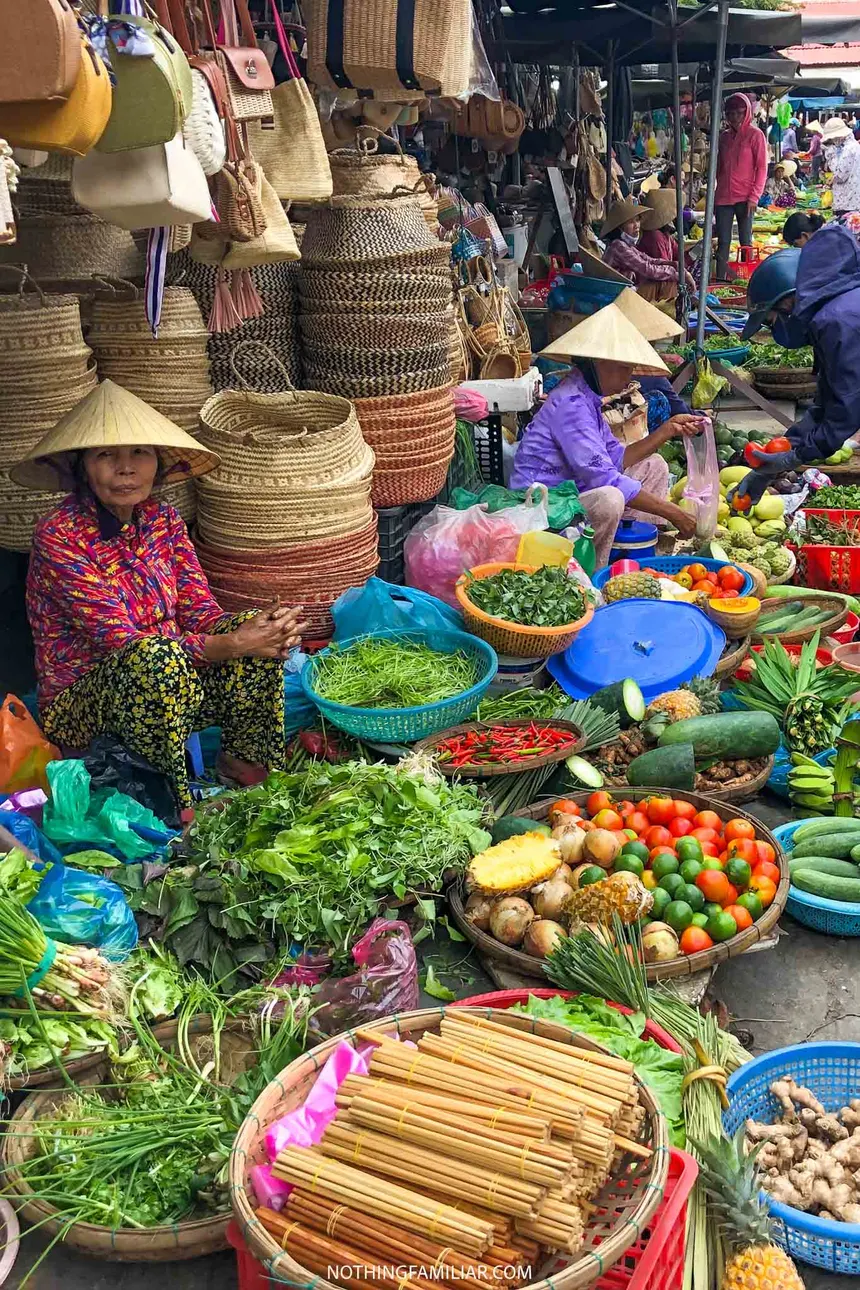
How Cao Lau Compares to Other Vietnamese Noodle Dishes
Vietnamese cuisine reveals extraordinary variety through its noodle-based dishes, but cao lau stands out even among must-eat Hoi An and Vietnam central region food:
- Mi Quang: Also from Central Vietnam but much brothier, mi quang features broad turmeric noodles, quail eggs, shrimp, and peanuts, while cao lau’s noodles are thicker and chewy, with less broth and pork as its star.
- Pho: A northern icon, pho boasts soft, silken rice noodles and a clear beef or chicken broth, far lighter and more aromatic than cao lau’s dense, fragrant pork broth and robust noodles.
- Com Ga Hoi An: Here, rice replaces noodles altogether and shredded chicken takes center stage, with herb salads and nuoc mam, rather than pork and lye noodles.
- White Rose Dumplings: Hoi An’s delicate appetizer, where translucent rice dumplings filled with pork or shrimp are shaped like flowers, contrasting with cao lau’s hearty, savory textures.
Unlike modern fusion or untraditional noodles, authentic cao lau cannot be found elsewhere. Its rare attributes—exclusive lye water noodles, Ba Le Well water, smoky pork, unique toppings—mean that even the most famous cao lau Hoi An outshines copies.
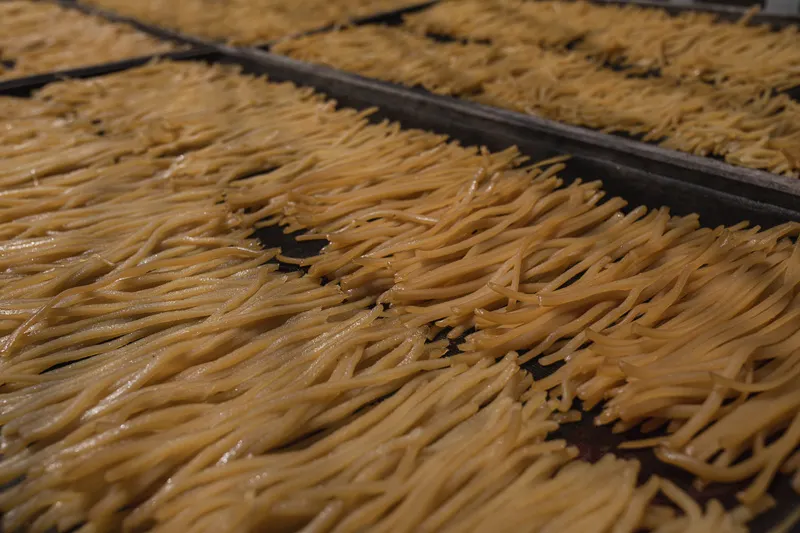
Tips for Experiencing Traditional Cao Lau in Central Vietnam
- Choose Reputable Spots: Stick to highly rated local vendors and time-honored restaurants, as ingredient quality and authenticity set them apart. Look for crowds of locals, not just tourists.
- Try Different Places Early: Each chef’s technique varies. Sample bowls from Ba Le, Thanh, and Morning Glory to appreciate the nuance.
- Eat at the Right Time: The best cao lau is freshest early in the day, as vendors sell out by late afternoon.
- Pair With Hoi An Specialties: Try white rose dumplings, banh mi, or com ga. This builds a full picture of Hoi An’s culinary heritage.
- Ask About Ingredients: Don’t be shy—ask if they use Ba Le Well water or Tra Que greens. Vendors are proud to share their traditions.
To plan your customized, slow-travel food journey (we don’t run tours—we craft experiences), contact us at Whatsapp +84868319161.
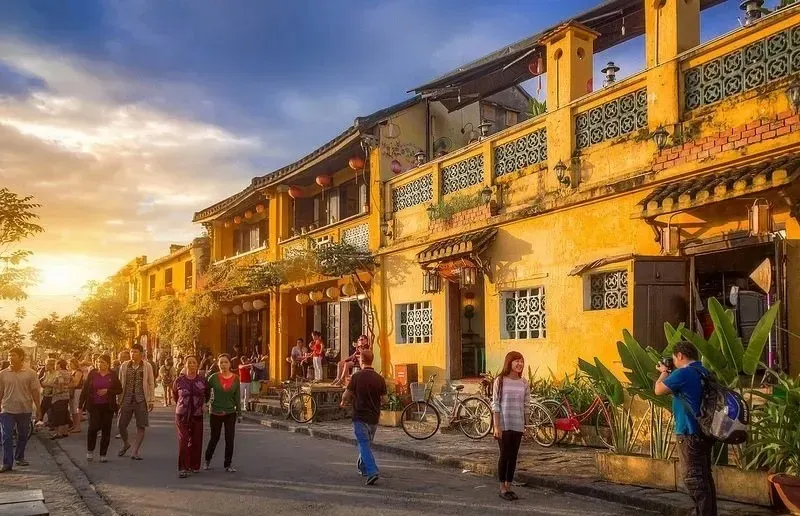
Cao Lau Recipe: How to Create the Iconic Hoi An Dish at Home
If you wish to recreate authentic cao lau at home, some adaptations are needed but much of the flavor is achievable:
Ingredients
- 400g thick rice noodles (look for Japanese udon as substitute if necessary)
- 250g pork shoulder, thinly sliced
- 2 tbsp soy sauce
- 1 tbsp five-spice powder
- 1 tbsp sugar
- 2 tbsp brown sugar
- 1 tbsp fish sauce
- Fresh herbs: mint, coriander, lettuce
- Bean sprouts
- Fried pork skin or rice crackers (for crunch)
- Optional: 1/2 tsp baking soda for lye water flavor
Steps
- Marinate Pork: Mix pork with soy sauce, five-spice, fish sauce, and sugar. Marinate for at least 2 hours, or overnight.
- Cook Pork: Roast or pan-sear pork until golden, then slice thin.
- Prepare Broth: Simmer pork bones (if available) with a small onion, ginger, soy sauce, and a touch of sugar for 1-2 hours to create concentrated stock.
- Prepare Noodles: If you can’t get cao lau noodles, use udon or another firm rice noodle; boil with a pinch of baking soda.
- Assemble: In a bowl, layer noodles, slice pork, fresh herbs, bean sprouts, and pour over a few spoonfuls of broth. Top with crunchy crackers or pork skin.
While impossible to replicate the water of Ba Le Well outside Vietnam, this method brings you close to the texture, flavor, and visual appeal of a bowl of highly rated cao lau hoi an.
**We don’t run tours—we craft experiences. Each journey is a story written just for you, designed for those who wish to explore Vietnam slowly, deeply, and meaningfully. No fixed itineraries. No crowds. Just you—and the moments that truly matter. Contact us: **Whatsapp +84868319161
For your stay, discover The Manor Hoi An (airbnb.com.au/h/themanorhoian5beds), Hola 1 (airbnb.com.au/h/hola1a), and Hola 2 (airbnb.com.au/h/hola22) for a home that suits the rhythm of your Hoi An adventure—and don’t forget to check out ovuigo for travel planning and tips.



